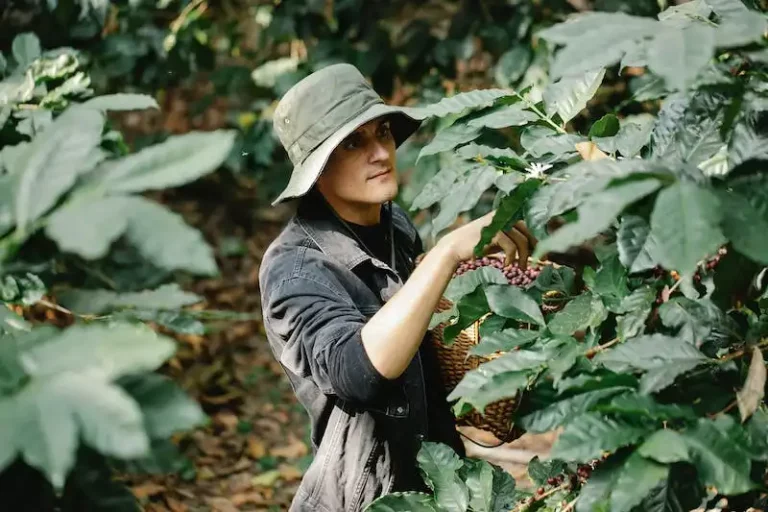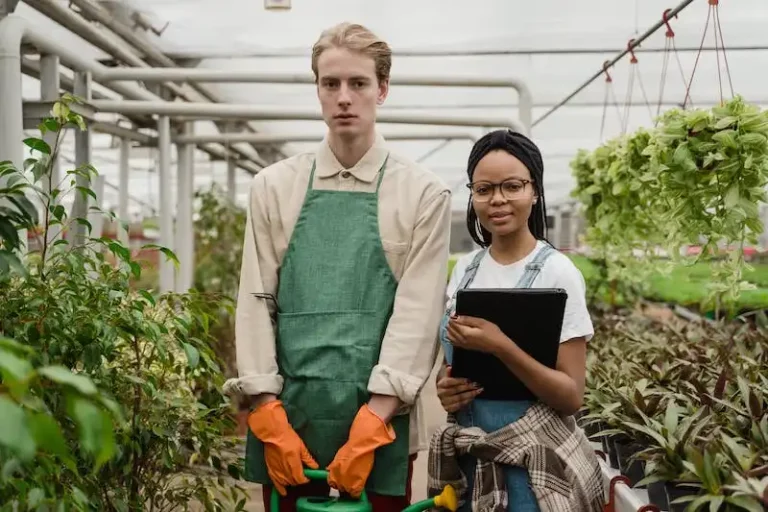When it comes to growing tomatoes, many people think that it only starts with having a big garden space. But the truth is, you can grow tomatoes in pots too! Choosing the right pot is the first step of the process. The pot should be at least 5 gallons in size to allow the roots plenty of room to grow.
Growing tomatoes in pots has its own set of advantages. You have more control over the growing conditions, and it’s easier to take care of the plants. Plus, with the help of Proven Winners®, there is a guide that makes growing tomatoes in pots a breeze. The Ultimate Guide from Proven Winners® ensures that you have all the information you need for successful tomato growing.
Before you start growing tomatoes in pots, you need to locate the right spot for your plants. Tomato plants need at least 6-8 hours of direct sunlight each day, so choose a location that receives plenty of sunlight. The next thing you need to do is choose the right potting soil. Using a high-quality potting mix ensures that your tomato plants get the nutrients they need.
When planting your tomato seedlings in the pot, make sure to bury them deep enough. This helps in establishing stronger plants by producing more roots along the stems. Disturbing the root system of tomato plants also helps in producing more fruit. To control weeds and keep moisture in the soil, mulch the top of the potting mix with a layer of straw or wood chips.
Feeding your tomato plants is also important. Using a balanced fertilizer according to the instructions on the package is recommended. Feed your plants with fertilizer a few times throughout the growing season to ensure they have enough nutrients for healthy growth. Pruning is another important step in growing tomatoes in pots. By removing the suckers, or the small shoots that grow in the crotch between the main stems and the branches, you will help the plant focus its energy on producing more fruit.
Tomatoes grown in pots have excellent germination rates and are not limited by the growing zones. This means you can grow them all year round, regardless of your climate. The goal is to install trellises or cages to support the plants as they grow taller. This ensures that the stems stay off the ground and reduces the chance of disease.
So, whether you have limited space in your garden or just want more control over your tomato plants, growing them in pots is an excellent option. With the help of the Ultimate Guide from Proven Winners®, you can enjoy delicious homegrown tomatoes, right from your own patio or balcony.
Read more: How to Grow Tomatoes in Pots – The Ultimate Guide from Proven Winners®
Container Gardening 101: How to Care for Tomato Plants in Pots
Growing tomatoes in containers can be a rewarding and enjoyable experience. Whether you have limited garden space, want to grow tomatoes on a balcony or patio, or simply prefer the convenience of container gardening, caring for tomato plants in pots is a great option. Here are some frequently asked questions and tips to help you successfully grow tomatoes in containers:
- Choosing the right container: When selecting a container for your tomato plants, opt for a pot that is at least 8 inches deep and has ample drainage holes to prevent waterlogging. You can select a plastic, terracotta, or ceramic pot, but make sure it is large enough to accommodate the root system of the tomato plant.
- Choosing the right tomato varieties: Some tomato varieties are more suitable for container gardening due to their compact habit and limited height. Look for varieties specifically labeled as “patio,” “dwarf,” or “bush” tomatoes, as they will stay smaller and require less space.
- Choosing the right potting mix: Use a well-draining potting mix that is specially formulated for containers. Avoid using garden soil, as it may not provide adequate drainage and can lead to root damage. A mix that includes peat moss, perlite, and vermiculite is a good choice for tomato plants.
- Planting and fertilizing: Plant your tomato seedlings in the potting mix, leaving enough space for root development. Water the plants deeply after planting, and regularly feed them with a balanced fertilizer. Tomato plants are heavy feeders and benefit from additional nitrogen during fruiting time. Follow the instructions on the fertilizer package for best results.
- Watering: Tomatoes need regular watering, especially during hot weather. Water the plants thoroughly whenever the top inch of the potting mix feels dry to the touch. Avoid overwatering, as it may lead to root rot. Mulch the soil surface to help retain moisture and reduce weed growth.
- Sunlight: Tomato plants require at least 6-8 hours of direct sunlight each day to thrive and produce delicious fruits. Place your container in a sunny spot, such as a south-facing window or a sunny spot on your balcony or patio. If needed, use a stake or trellis to support the plant as it grows taller.
- Common problems: Tomatoes can encounter common issues like pests, diseases, or nutrient deficiencies. Keep an eye out for signs of pests or diseases, such as wilting leaves, spots, or distorted growth. If needed, consult a local horticulture expert for guidance on how to address these problems.
- Ultimate Guide from Proven Winners®: For more in-depth information and tips on growing tomatoes in containers, check out the Ultimate Guide from Proven Winners®. It includes helpful photos, step-by-step instructions, and expert advice to keep your tomato plants healthy and productive throughout the growing season.
With proper care and attention, you can enjoy a bountiful harvest of delicious tomatoes without the need for a traditional garden. Container gardening allows you to experience the joy of growing your own food, even in limited spaces. So grab your pots, choose your favorite tomato varieties, and start planting!
Choosing Tomato Varieties for Containers
When it comes to growing tomatoes in pots, choosing the right tomato variety is essential. Not all tomato varieties are suitable for container gardening, as some can grow very large and require more space and support. Here are a few key tips to keep in mind when selecting tomato varieties for containers:
- Size: Look for tomato varieties that are specifically bred for container gardening. Compact or “dwarf” varieties are well-suited for small pots, while bushy or determinate varieties are known to grow as small bushes and need less support.
- Heat Tolerance: Choose tomato varieties that can tolerate heat well, as containers tend to heat up quickly. Heat-tolerant varieties will ensure that your tomato plants continue to produce fruit even in hot weather.
- Fruit Size: Consider the size of the fruit that each tomato variety produces. Larger tomatoes require bigger pots and more support, while smaller varieties can grow in smaller pots.
- Taste: Don’t forget about flavor! Select tomato varieties that are known for their delicious taste. There’s nothing better than growing your own tasty tomatoes.
Some popular tomato varieties that are suitable for container gardening include ‘Patio Princess’, ‘Tiny Tim’, ‘Tumbling Tom’, ‘Bush Early Girl’, and ‘Sweet ‘n’ Neat’.
Remember that each variety may have its own needs when it comes to fertilizing and feeding. Read the instructions provided with your tomato seeds or seedlings to ensure you are providing them with the proper care.
Choosing the right tomato varieties for your containers is a crucial step in ensuring successful and bountiful growth. Follow these tips to select the perfect tomatoes for your container garden and enjoy a season of delicious homegrown tomatoes!
Pot Size for Tomatoes
When it comes to growing tomatoes in pots, the size of the pot is an important factor that can significantly affect your harvest. Choosing the right size pot for your tomatoes is crucial for their growth and overall health.
A larger pot is generally better for tomato plants because it allows for more root growth and provides a greater volume of soil. This means that the plant has more room to spread its roots and absorb nutrients, resulting in healthier and more productive plants.
For indeterminate tomato varieties, which are larger and continue to grow throughout the season, a minimum pot size of 4-5 gallons is recommended. This larger pot size provides enough space for the plants to grow and develop a strong root system. It also helps to prevent issues like overcrowding and root-bound plants.
If you are growing determinate or dwarf tomato varieties, which are smaller and have a more compact growth habit, a pot size of 2-3 gallons can be sufficient. These smaller pots still provide enough room for the plants to grow and produce fruit, but they require less space and soil volume.
When choosing a pot, make sure it has drainage holes at the bottom to allow excess water to escape. This helps prevent problems like waterlogged soil, which can lead to root rot and other issues. If you are using self-watering containers, make sure the drainage holes are positioned above the reservoir so that the soil doesn’t become saturated.
When it comes to potting mix, choose a well-draining soil that is rich in organic matter. A mix of peat moss, compost, and perlite or vermiculite can provide good drainage while retaining moisture. Adding a slow-release fertilizer or tomato-specific fertilizer can also help provide the nutrients your plants need for healthy growth and flavorful fruit.
Once you have chosen the right pot size and potting mix, it’s time to plant your tomato starts. Dig a hole in the center of the pot and gently place the tomato plant into it. Make sure the plant’s root ball is level with or slightly above the soil surface. Fill in the hole with soil, gently firming it around the roots.
Water your newly potted tomato plant thoroughly to help settle the soil and provide moisture to the roots. Watering deeply and evenly is important for tomato plants, as inconsistent watering can lead to problems like blossom end rot and cracking.
As your tomato plants grow, they will need regular watering and feeding. Check the moisture level of the soil regularly, and water whenever the top inch of soil feels dry. During hot weather, you may need to water your plants more frequently to prevent them from drying out.
Fertilizing your tomatoes every 2-3 weeks with a balanced tomato fertilizer can help provide the nutrients they need for healthy growth and abundant fruit production. Follow the instructions on the fertilizer package for the best results.
Keep an eye out for any pest or disease problems that may affect your tomato plants. If you notice any signs of pests or diseases, take action quickly to prevent them from spreading and causing further damage.
With the right pot size, potting mix, and care, you can enjoy a bountiful harvest of delicious tomatoes right from your own outdoor space.
Remember to choose a variety of tomatoes that suits your preferences – whether it’s large heirloom tomatoes, flavorful cherry tomatoes, or something in between, there is a tomato variety to suit every taste.


